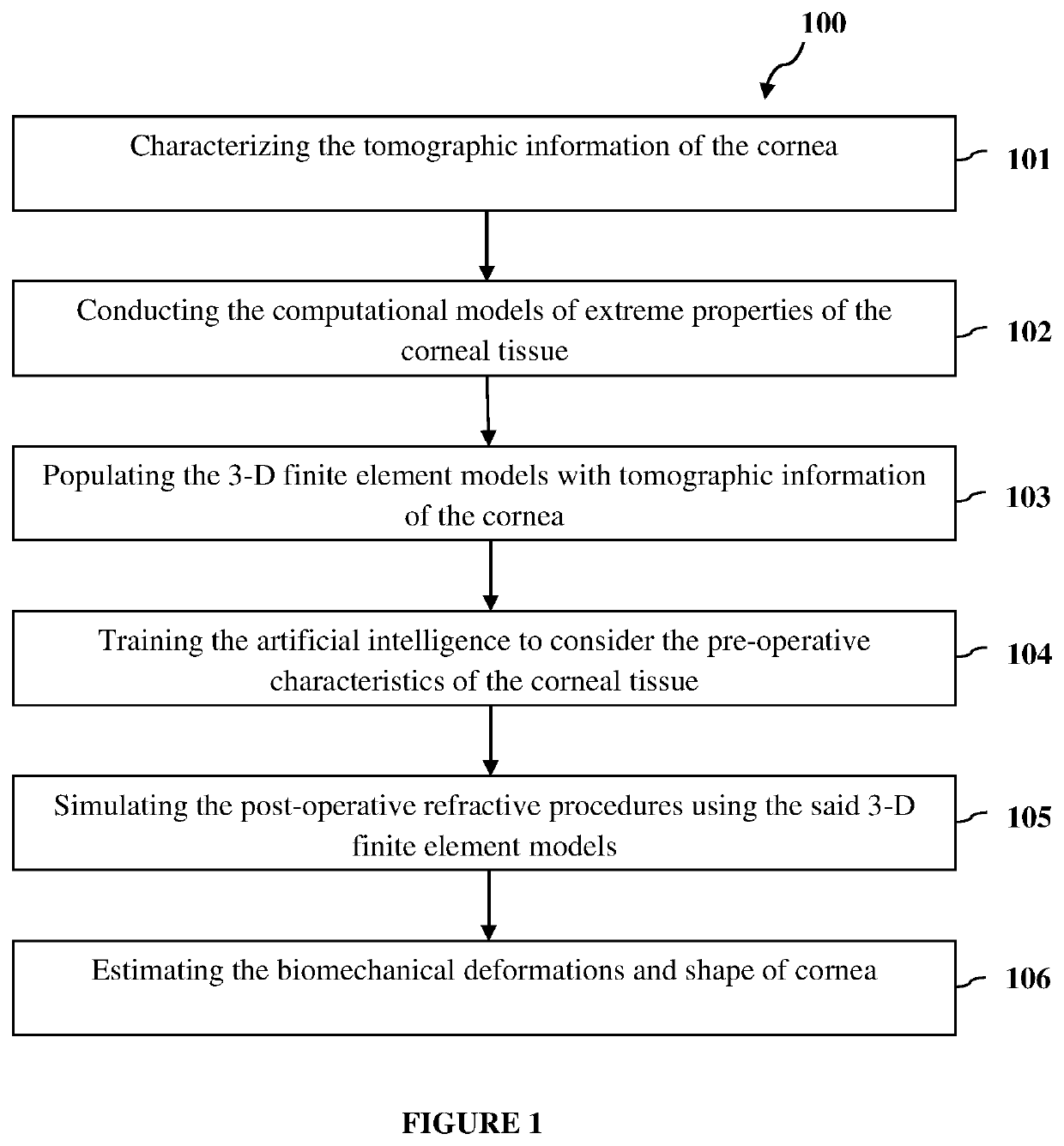A method to quantify the corneal parameters to improve biomechanical modeling
a biomechanical modeling and parameter technology, applied in medical simulation, medical informatics, medical automation diagnosis, etc., can solve the problems of corneal tomography change, lack of normal tensile strength of collagen fibrils, and poor organization of new collagen fibrils
- Summary
- Abstract
- Description
- Claims
- Application Information
AI Technical Summary
Benefits of technology
Problems solved by technology
Method used
Image
Examples
Embodiment Construction
Technical Field of the Invention
[0001]The present invention relates to a method to quantify the human corneal tissue parameters to improve the biomechanical modelling of refractive and therapeutic procedures meant to reduce or eliminate refractive errors and unwanted wavefront aberrations.
BACKGROUND OF THE INVENTION
[0002]Cornea is the outermost layer of the eye, which is transparent, dome-shaped surface that covers the front part of the eye. Cornea receives nourishment from the tears and the aqueous humor that fills the chamber behind it due to absence of highly organized group of cells and blood vessels.
[0003]Cornea, the transparent anterior part of the eye covers the iris, pupil and an anterior chamber. Cornea together with the lens refracts light accounting for approximately two-thirds of the eye's total optical power.
[0004]Cornea has unmyelinated nerve endings, which are sensitive to stimuli, temperature and chemicals and causes an involuntary reflex to close the eyelid. The ref...
PUM
 Login to View More
Login to View More Abstract
Description
Claims
Application Information
 Login to View More
Login to View More - R&D
- Intellectual Property
- Life Sciences
- Materials
- Tech Scout
- Unparalleled Data Quality
- Higher Quality Content
- 60% Fewer Hallucinations
Browse by: Latest US Patents, China's latest patents, Technical Efficacy Thesaurus, Application Domain, Technology Topic, Popular Technical Reports.
© 2025 PatSnap. All rights reserved.Legal|Privacy policy|Modern Slavery Act Transparency Statement|Sitemap|About US| Contact US: help@patsnap.com

